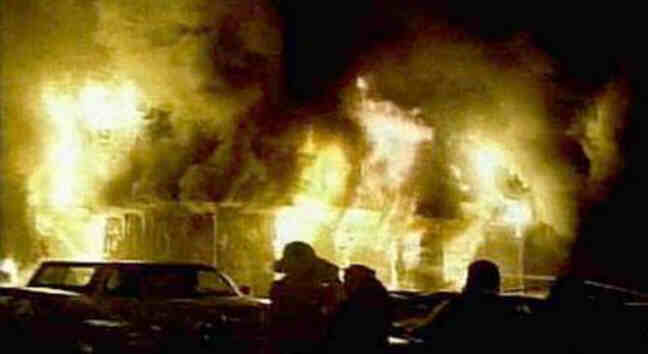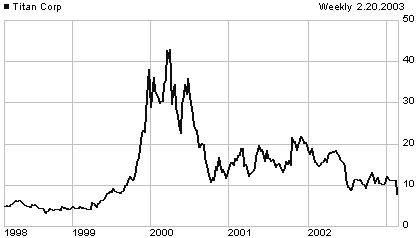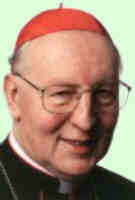 Deaths
which occurred on a 20 February: Deaths
which occurred on a 20 February:
2003:: 96 persons: Kevin
P. Anderson, 37; Stacie Angers, 29; Louis
S. Alves, 33; Christopher
Arruda, 30; Eugene Avilez, 21; Tina
M. Ayer, 33; Karla Bagtaz, 41; Mary
H. Baker, 32; Thomas
A. Barnett, 38; Laureen
M. (DeSantis) Beauchaine, 35; Steven Thomas Blom, 39; William
Christopher Bonardi III, 36; Richard
A. Cabral Jr., 37; Kristine
M. Carbone, 38; William
W. Cartwright, 42; Edward
B. Corbet III, 31; Michael Cordier, 31; Alfred
Carmino Crisostomi, 38; Robert Croteau, 31; Kevin J. Dunn, 37; Lisa
D'Andrea, 42; Matthew
P. Darby, 36; Dina Ann (Belanger) DeMaio [20 Feb 1973–]; Rachael
K. Florio-DePietro , 31; Albert
Anthony DiBonaventura, 18; Christina DiRienzo, 37; Edward
Ervanian, 29; Thomas Fleming, 30; Mark
A. Fontaine, 22; Daniel
John Frederickson, 37; Michael Fresolo, 32; James
C. Gahan , 21; Melvin Gerfin, 46; Laura
L. Gillett, 32; Charline Elaine Gingras-Fick, 35; Michael
James Gonsalves, 40; James Gooden, 37; Scott Griffith, 41; Derek Gray,
22; Skott
C. Greene, 35; Bonnie
L. Hamelin, 27; Jude Henault, 37; Andrew
Hoban , 22; Abbie
L. Hoisington, 28; Michael
Hoogasian, 31, and his wife Sandy
Hoogasian, 27; Carlton
“Bud” Howorth III, 39; Eric James Hyer, 32; Derek Brian
Johnson, 32; Lisa
Kelly, 27; Tracy
F. King, 39; Michael Joseph Kulz, 30; Keith
Lapierre, 29; Dale
L. Latulippe, 46; Stephen
M. Libera , 21; John
M. Longiaru , 23; Ty
Longley [04 Sep 1971–]; Judith
Manzo , 37; Steven
Mancini, 39, and his wife Andrea
Louise Mancini, 28; Keith A. Mancini, 34; Thomas Frank Marion Jr., 27;
Jeffery Martin, 33; Tammy
A. Mattera-Housa, 29; Kristen
Leigh McQuarrie, 37; Thomas
Medeiros, 40, and his girlfriend Lori
K. (Roe) Durante, 40; Samuel Miceli, 37; Leigh
Ann Moreau, 21; Ryan M. Morin, 31; Jason Morton, 38; Beth Ellen Mosczynski,
33; Donna
M. Mitchell, 29; Nicholas
Philip O'Neill, 18; Katherine
O'Donnell, 26; Matthew James Pickett, 23; Carlos L. Pimentel Sr., 38;
Christopher Prouty, 34; Jeffrey Rader, 32; Teresa Rakoski, 30; Robert
L. Reisner III, 29; Walter Rich, 40; Donald
Paul “Inky” Roderiques , 46, and his friend Victor
Stark , 39; Tracey
Romanoff, 32; Joseph
E. Rossi, 35; Bridget
Sanetti , 25; Rebecca
Shaw, 24; Dennis
Smith , 36; Shawn
Patrick Sweet , 28; Jason
Sylvester, 24; Sarah Jane Telgarsky, 37; Kevin
R. Washburn , 30; Everett
Thomas ''Tommy'' Woodmansee III, 30; Robert Daniel Young, 29; Benjamin
Suffoletto, 43; due to fire [photo >], during
concert by Great White “heavy metal” rock band (of which Longley
was the lead guitarist) at nightclub The Station in West
Warwick, Rhode Island, after 23:00 (during the first song), when fireworks
(for which the club did not have a city permit) ignite the soundproofing
foam in the back of the stage and the low hanging ceiling and, within 3
minutes, fire engulfs the whole wooden building (which was not required
to have sprinklers), and the dense smoke prevents most of the 350 persons
inside (50 more than legal capacity) from seeing the three back exits, so
that most stampede to the front exit. Gonsalves
was DJ “Doctor Metal” who had just introduced the band. Legal
assistant (by day) DeMaio was moonlighting as a waitress at the club. So
were the Mancinis (bouncer and cashier). 187 are injured, of which one (Linda
Suffoletto, 43, wife of Benjamin Suffoletto listed above) would die on 28
February, one (Kelly Viera) on 01 March..
2003 Robert Deneth,
shot by Saud bin Ali bin Nasser, 30, in Riyadh, Saudi Arabia. Deneth, a
British employee of British aviation and aerospace company BAE Systems,
was driving and stopped at a stop-and-go light.
2002 Brenda,
10; Jonathan, 6; Cecelia, 4; and Anthony García, 2, by carbon monoxide
from a smoking charcoal grill in their Pico Rivera, California, home, as
they are sleeping in the early morning. Another sibling, 6, dies the next
day. The last sibling, a girl, 9, and the father Adair García, 30,
are hospitalized. He is believed to have caused this as a murder-suicide
and will be charged with murder.
^
2002 Over 400
in burning Egyptian train.
An 11-car third-class train crowded with Egyptians leaving the capital
for a holiday weekend caught fire and sped on in flames for three
kilometers, killing more than 400 persons, including some who died
as they jumped from the burning cars. The cause of the fire was probably
a burst gas cylinder or an overturned portable stove illegally used
for cooking by passengers.
Each
car designed to hold about 150 passengers was crammed with possibly
twice that number, so that as many as 3000 persons may have been aboard,
and certainly more than 1200. The train was so full that many passengers
were sitting on the floor.
The
train had left Cairo on its 500-km journey to Luxor at about 23:30
the previous day and the fire broke out about 01:00. The train traveled
in flames for 3 km before finally stopping at Reqa al-Gharbiya, a
village 75 km south of Cairo, when the engineers finally realized
what was happening and uncoupled the seven burning cars from the front
nine. The flames were put out hours later. [photo below: the burnt-out
train in the afternoon]
Some of the corpses were under seats as if people had retreated there
in hopes of finding safety. Corpses had melded together in piles on
the train.
At least 65 persons
were treated for injuries, most in the hospital in the nearest town,
Ayyat, 20 km to the north.
Many
of the passengers were going to their home villages for Eid al-Adha,
or the "Feast of the Sacrifice," a four-day holiday that, in 2002,
starts on 22 February. The holiday commemorating God's provision of
a ram to Abraham as a substitute sacrifice instead of his son is regarded
as the most important feast in the Islamic calendar (it also marks
the beginning of the Hadj).
The rail line linking Cairo with southern Egypt is closed indefinitely.
This is the deadliest train accident in years in a country where such
tragedies are common. In 1998, 47 people were killed when a train
jumped its rails and slammed into a crowded town square. The state-owned
Egyptian Railway Authority has been plagued by overstaffing, old equipment
and poor service. It relies on heavy state subsidies to operate some
1300 trains every day, keeping fares low for the poor Egyptians who
rely on the trains. |
|
 On
a 20 February:
On
a 20 February:  2001
Cease-fire offered to main Philippine rebels.
2001
Cease-fire offered to main Philippine rebels. Deaths
Deaths
 1482
1482 1932
Enrique Múgica Herzog, político español, ex ministro de Justicia
y Defensor del Pueblo.
1932
Enrique Múgica Herzog, político español, ex ministro de Justicia
y Defensor del Pueblo. In his lifetime he was known chiefly as a political and social satirist,
but since his death recognition of
In his lifetime he was known chiefly as a political and social satirist,
but since his death recognition of